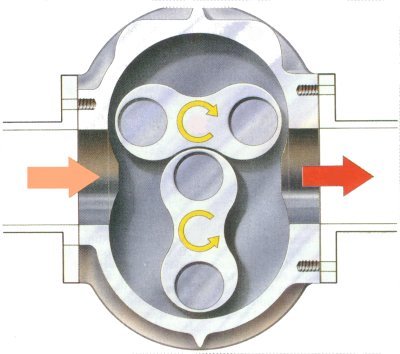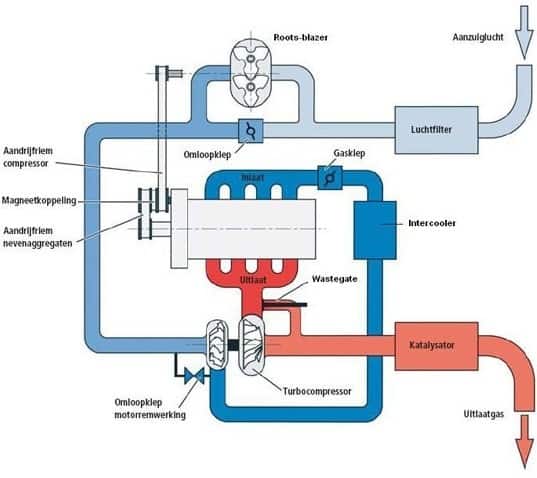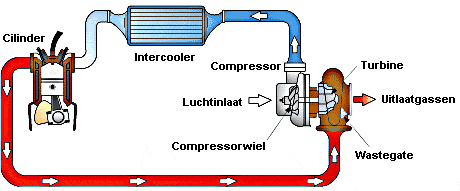Subjects:
- Roots Compressor
- Intercooler
Roots Compressor:
A roots compressor (also called a supercharger) provides the extra air supply to the engine. The cylinder is filled with overpressure, so that with the right amount of injection and with the right ignition time a higher power and torque can be obtained. The advantage of a roots compressor over a turbo is that it already builds up pressure at low speeds. A turbo first needs exhaust gases to get pressure, which is also called the turbo lag. A roots compressor is driven by a belt and does not suffer from it.
The disadvantage of this compressor is that engine power is lost because it is mechanically driven. A turbo does not have that disadvantage, so that the ultimate power gain with a turbo is greater.
The two vanes in the figure on the right rotate in opposite directions from each other. They do not touch each other while spinning. Because the top vane rotates clockwise and the bottom one counterclockwise, air is entrained at the top and bottom of the compressor housing. This air ensures the supercharging of the engine.

There are engines where both a roots compressor and a turbo are used, eg the TSI engines from Volkswagen. (The turbo is a separate part and is described in detail on the Turbo page). Thanks to the compressor, these TSI engines have a higher torque and higher power at low speeds. At low revs, the compressor is activated that starts the turbo and takes care of the cylinder filling at low revs, so that the engine is supplied with enough torque below 2000 rpm. At a certain speed (around 2000 rpm) the compressor is switched off and the turbo builds up pressure. The turbo provides more power at high revs. Due to the combination of compressor and turbo, there is no longer a turbo lag.
The compressed air goes through the compressor or bypass valve to the turbo and through the turbo through the intercooler to the intake manifold.

intercooler:
The temperature of the compressed air can get very warm (better than 60 degrees Celsius). For a better cylinder filling and therefore also for a better combustion, it is necessary that the air cools sufficiently. The intercooler takes care of that. The intercooler is a separate part, and is therefore extensively described on another page; see the page Intercooler.

